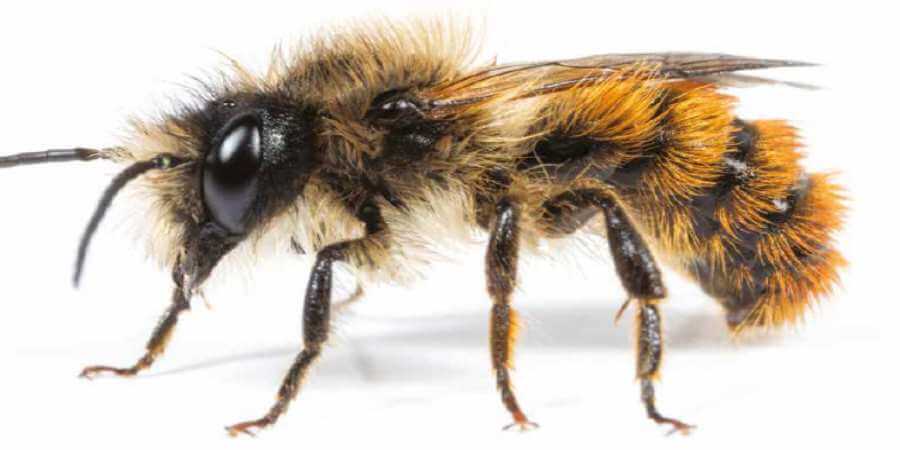
Masonry bees look like honeybees and are also known as mortar bees. There are nearly 20 species in Britain, the most common is the red mason bee.
They don't nest in a colony but in individual holes in the ground. They can also nest in walls, such as in mortar joints, soft bricks or stones.
Masonry bees prefer sunny, south-facing elevations to enhance the germination of their eggs.
Nests are established in spring or summer and contain 6-12 eggs. Each egg is contained in a cell with pollen and nectar. It's then sealed, usually with mud. New adults emerge the following year to repeat the cycle.
Will my property be damaged by masonry bees?
Masonry bees usually use pre-existing holes and crevices, so they don't usually cause significant damage to property.
They can nest in old nail holes, irregular cavities in stone, beetle borings in timber, or inside spaces under roof tiles and even inside locks.
While they tend to be solitary, females are attracted to sites with other females present Some may be able to burrow into soft materials by digging with their mandibles.
Are masonry bees dangerous?
The female has a sting, but they won't use it unless greatly provoked.
Masonry bees aren't as unfriendly to buildings as widely believed, so most of the time there's no need to intervene.
Masonry bees are also efficient pollinators.
How to control or treat masonry bees
To control or treat masonry bees:
- Clean out affected mortar joints to a depth of 15mm and repointed. It's best to do this in summer or autumn to prevent females from reusing their nest sites.
- New mortar should not be too strong for the bricks or stone, but hard enough to discourage the bees.
- Fill in galleries and burrows using a mortar gun. Use a wetter-than-usual mix to help it flow into the space.
- Add a water-based insecticide to mortar mixes. This is sometimes done when repointing in spring if there's a risk of bees damaging the mortar before it hardens.
- It may be necessary to reinstate a protective lime render on formally rendered walls, for example, if the bees have entered the stone itself. Limewash isn't usually a useful deterrent on its own.
- You may need to put up a temporary fine netting over walls. Do this in spring when bees are searching for their nests.
- Place artificial nesting boxes on or near walls to help entice bees away from the walls and prevent recolonisation. These can be homemade from dried clay soil indented with holes, or pre-made kits manufactured from environmentally-friendly materials.
- If the bees are nesting inside bricks or stones, you may need to use a chemical treatment. This treatment alone is not always effective in the long term, may stain masonry and isn't environmentally friendly. However, there may be no alternative if the bees are nesting inside bricks or stones.

